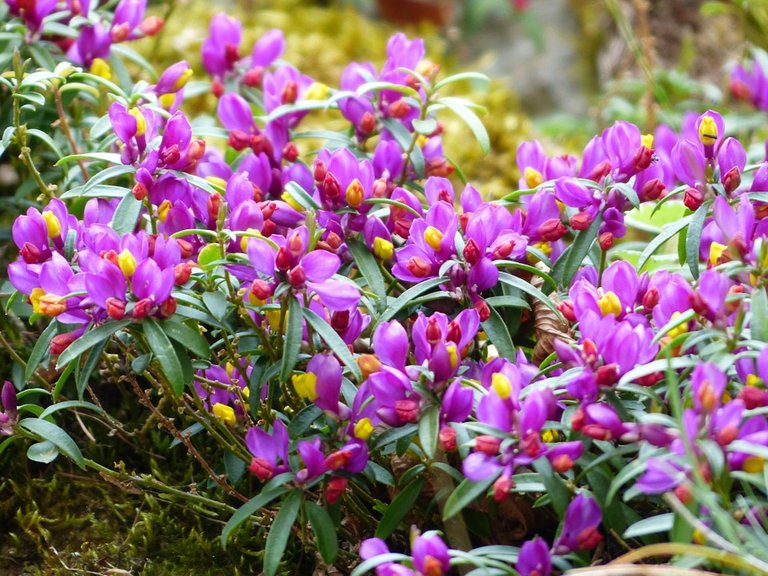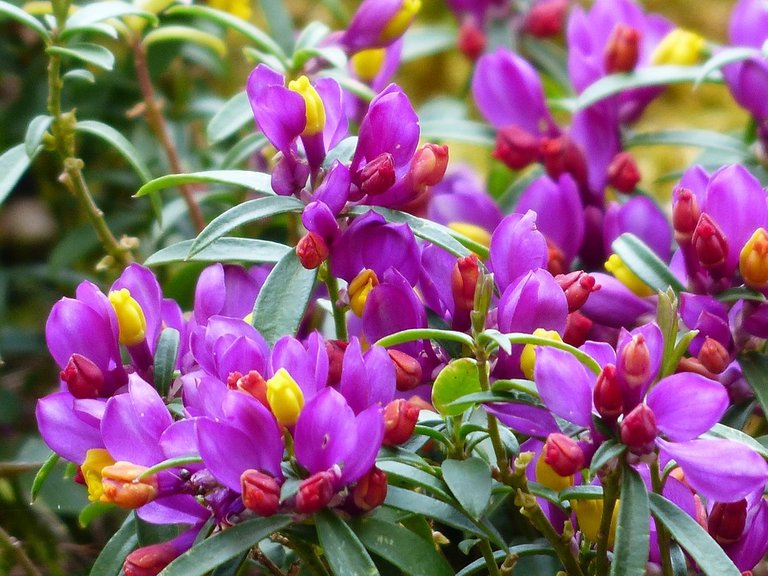Fringed Polygala, Gaywings, Flowering Wintergreen (Polygala paucifolia Willd.)
By Brandee Wenzel
Easily mistaken for an orchid, this bright little jewel is always a delight to stumble across. A member of the Polygalaceae or Milkwort Family, this and fellow species in the genus Polygala produce compounds reputed to increase milk production in nursing mammals. In fact, Polygala is derived from the Latin “poly” meaning “many, much” and “gala” meaning “milk”. Ethnobotanical references to Gaywings were recorded in James Herrick’s 1977 Iroquois Medical Botany, in which the majority of use was indicated for skin inflammations such as abscesses, boils, and sores.

Fringed polygala emerges from creeping, partly underground stems, and is typically no taller than 15 cm (6 inches). Its upper leaves are oval and crowded at the top of the stem, which gives this plant its resemblance to wintergreen. The light pink to deep magenta flowers are made up of five sepals and three petals. The sepals consist of three small outer and two large, showy petal-like “wings”. Of the petals, two are united to form a tubular structure, with the third keeled or boat-shaped petal cresting in a delicate yellow or pink fringe or frill. The keel encloses the reproductive structures, and when a bug lands on the keel, these structures are exposed for pollination. Besides the showy flowers that are insect-pollinated, there are also inconspicuous flowers that are borne underground and which self-fertilize without opening.

Besides Minnesota, gaywings thrive in dry to moist conifer forests from the eastern half of Canada and northeastern United States down to the mountains of Tennessee and Georgia. Its bloom time is spring to early summer. There are over 60 different kinds of Polygala in the United States, with the greatest diversity in the Southeast. Those of us living in the northern United States are fortunate to have an abundance of this wildflower to brighten our woods in the spring.

https://www.fs.fed.us/wildflowers/plant-of-the-week/polygala_paucifolia.shtml
magoo-2 found a series of multi accounts of a same owner is following your articles to cheat your generous rewards.
magoo-2 found these accounts are suspicious & can be multi accounts of a single owner. Conclusion is based on last 30 days transactions:
@moniristi
@shishiristi
@aflatunnisa
@hafez
@shihabieee
@mrashik
magoo-2
Check our latest multi comment spam update report